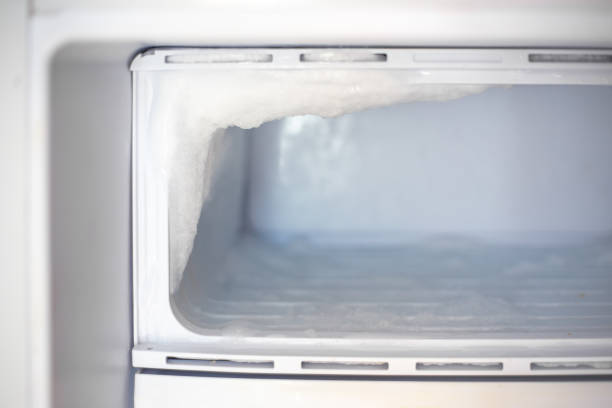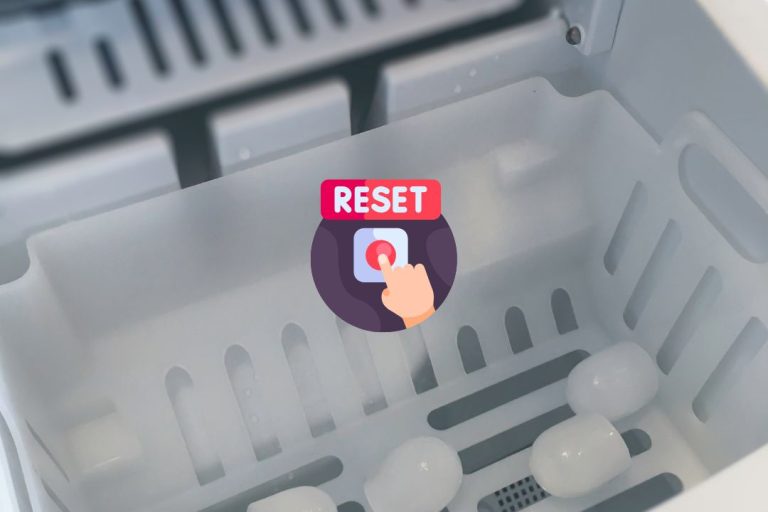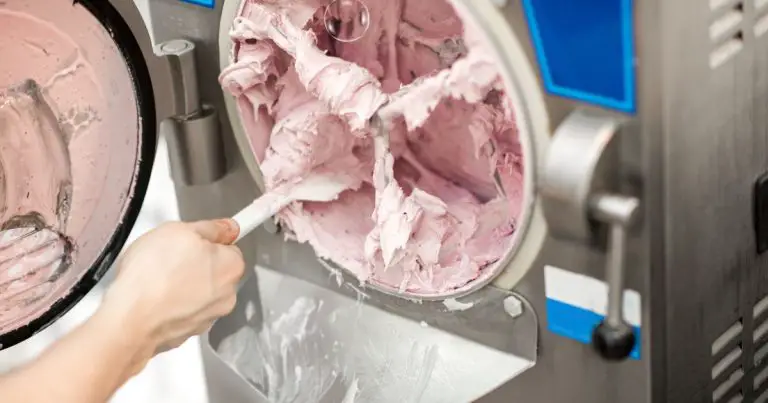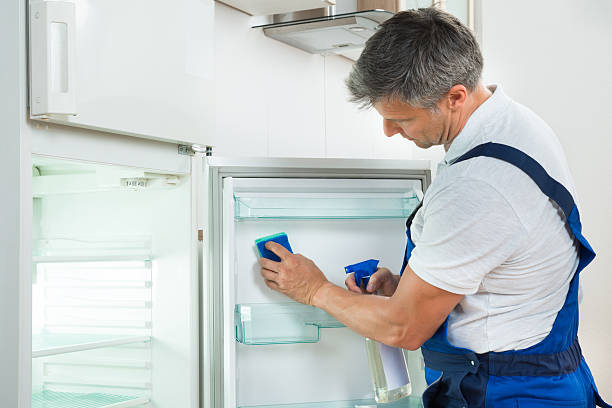Expert Advice: How to Keep Your Refrigerator Cross-Contamination-Free

Key Takeaways
- Organize your refrigerator by creating designated zones for different types of food to prevent cross-contamination.
- Use sealed containers to store leftovers and perishables, and practice proper handling of raw meats to minimize the spread of bacteria.
- Regularly clean and sanitize your refrigerator, monitor food quality, and adhere to proper temperature control to ensure food safety and promote overall wellness in your household.
Cross-contamination in the refrigerator can pose serious health risks by transferring harmful bacteria from one food item to another.
To maintain food safety and prevent contamination, it’s crucial to follow proper storage practices. In this guide, we’ll walk you through effective strategies to avoid cross-contamination in your refrigerator, ensuring that your food remains safe for consumption.
1. Organize Your Refrigerator
Start by organizing your refrigerator to create designated zones for different types of food.
Keep raw meats, poultry, and seafood separate from ready-to-eat foods such as fruits, vegetables, and cooked leftovers.
Utilize clear storage bins or drawers to segregate these items and prevent any leakage or drips from contaminating other foods.
2. Use Sealed Containers
Store leftovers and perishable items in sealed containers to prevent them from coming into contact with other foods.
Opt for airtight containers or resealable bags to maintain freshness and minimize the risk of contamination.
Label containers with the date to ensure timely consumption and rotation of foods.
3. Practice Proper Handling
When handling raw meats or poultry, take precautions to avoid spreading bacteria. Use separate cutting boards, knives, and utensils for raw and ready-to-eat foods.
Wash your hands thoroughly with soap and water before and after handling raw ingredients to prevent the transfer of bacteria.

4. Maintain Proper Temperature
Ensure that your refrigerator is set to the appropriate temperature (ideally below 40°F or 4°C) to slow down the growth of bacteria.
Use a refrigerator thermometer to monitor the temperature regularly and make adjustments as needed. Avoid overpacking the refrigerator, as overcrowding can obstruct airflow and lead to uneven cooling.
5. Clean and Sanitize Regularly
Regularly clean and sanitize your refrigerator to eliminate any potential sources of contamination.
Wipe down shelves, drawers, and door seals with a solution of warm water and mild detergent. Pay special attention to spills or drips from raw meats, and promptly clean up any mess to prevent cross-contamination.
6. Rotate Foods Properly
Remember to use the oldest food first before the newer ones. This helps to make sure nothing goes bad before you get a chance to eat it.
Keep switching around your food so nothing sits for too long and goes off. Always look at the expiration dates and throw away anything that’s gone bad.
By doing this, you’re making sure your food stays fresh and safe to eat. It’s a simple way to avoid getting sick and ensures that you’re always eating the best food possible.

7. Be Mindful of Storage Locations:
When putting away food in your fridge, think about where you place things. Keep raw meats and chicken on the bottom shelf so their juices don’t drip onto other foods and make them unsafe to eat.
Put ready-to-eat foods, like salads and dairy products, on higher shelves.
This helps stop any germs from getting onto them. By doing this, you’re making sure your food stays safe and yummy to eat, keeping you and your family healthy and happy.
8. Monitor Food Quality
Make sure to check your food often for any signs that it might not be good to eat.
Look out for strange smells, weird colors, or if you see any mold growing on it. If you notice anything unusual, throw the food away right away.
This helps to stop any bad bacteria from spreading and making you sick.
By being careful and getting rid of any food that doesn’t look right, you’re making sure that what you eat is safe and healthy for you and your family.
Conclusion
By implementing these strategies diligently, you’ll not only safeguard your family from foodborne illnesses but also promote overall wellness in your household.
Consistently maintaining a clean and organized refrigerator, coupled with proper temperature control and careful handling of food items, fosters a hygienic environment. Emphasizing the importance of regular monitoring of food quality underscores your commitment to food safety.
By adhering to these practices, you not only reduce the risk of cross-contamination but also instill confidence in the freshness and integrity of the food you serve, ensuring peace of mind for you and your loved ones.
FAQ’s
Q1. How often should I clean my refrigerator?
It’s a good idea to clean your fridge at least once a month. Wipe down shelves and drawers with warm, soapy water to keep it clean and safe for your food.
Q2. Can I store raw meat with other foods in the fridge?
It’s best to keep raw meat separate from other foods to prevent any juices from dripping onto them. Store raw meat on the bottom shelf to avoid contamination.
Q3. How do I know if my food has gone bad?
Look for signs like strange smells, odd colors, or mold growing on your food. If you see anything unusual, it’s better to throw it away to avoid getting sick.
Q4. Do I need to label my food containers?
Yes, labeling your food containers with the date helps you keep track of when you stored them. This way, you can use older items first and prevent food from going bad.








Awsome post and straight to the point. I don’t know if this is actually the best place to ask but do you folks have any thoughts on where to employ some professional writers? Thanks in advance 🙂
I like this post, enjoyed this one thank you for posting. “What is a thousand years Time is short for one who thinks, endless for one who yearns.” by Alain.
I am pleased that I found this blog, precisely the right info that I was looking for! .
Hi, i feel that i saw you visited my weblog so i came to “return the prefer”.I’m trying to in finding things to enhance my website!I assume its ok to use some of your ideas!!
I appreciate, cause I found exactly what I was looking for. You have ended my 4 day long hunt! God Bless you man. Have a nice day. Bye
Great site! I am loving it!! Will come back again. I am bookmarking your feeds also
Hi, I think your site might be having browser compatibility issues. When I look at your website in Safari, it looks fine but when opening in Internet Explorer, it has some overlapping. I just wanted to give you a quick heads up! Other then that, fantastic blog!
Lovely blog! I am loving it!! Will be back later to read some more. I am taking your feeds also
Nice read, I just passed this onto a friend who was doing a little research on that. And he actually bought me lunch because I found it for him smile So let me rephrase that: Thank you for lunch! “A human being has a natural desire to have more of a good thing than he needs.” by Mark Twain.
I like this post, enjoyed this one regards for putting up.
Useful information. Fortunate me I discovered your web site accidentally, and I’m surprised why this coincidence did not came about in advance! I bookmarked it.
What i do not understood is in truth how you’re no longer really much more smartly-appreciated than you might be now. You are very intelligent. You know thus significantly on the subject of this matter, produced me individually consider it from a lot of numerous angles. Its like women and men don’t seem to be fascinated except it’s one thing to accomplish with Woman gaga! Your personal stuffs outstanding. Always care for it up!
Hi, i think that i saw you visited my blog thus i came to “return the favor”.I’m trying to find things to improve my site!I suppose its ok to use some of your ideas!!
Wow that was unusual. I just wrote an incredibly long comment but after I clicked submit my comment didn’t show up. Grrrr… well I’m not writing all that over again. Regardless, just wanted to say fantastic blog!
I regard something really special in this web site.
You really make it seem really easy along with your presentation however I to find this matter to be actually one thing which I feel I would by no means understand. It sort of feels too complicated and very broad for me. I’m having a look ahead in your subsequent put up, I?¦ll attempt to get the hang of it!
When I originally commented I clicked the -Notify me when new comments are added- checkbox and now each time a comment is added I get four emails with the same comment. Is there any way you can remove me from that service? Thanks!
Someone essentially help to make seriously articles I would state. This is the first time I frequented your web page and thus far? I surprised with the research you made to create this particular publish extraordinary. Fantastic job!
I like this web site so much, bookmarked. “American soldiers must be turned into lambs and eating them is tolerated.” by Muammar Qaddafi.
There is clearly a bunch to realize about this. I believe you made various nice points in features also.
Great blog right here! Additionally your web site lots up fast! What host are you the use of? Can I am getting your affiliate hyperlink to your host? I wish my site loaded up as fast as yours lol
What Is Kerassentials? Kerassentials is a doctor-formulated oil for healthy skin and nails.
What Is LeanBiome? LeanBiome is a natural dietary supplement that promotes healthy weight loss.
Rattling clear internet site, thanks for this post.
I like the helpful information you supply for your articles. I’ll bookmark your weblog and take a look at once more right here regularly. I’m quite sure I’ll be told many new stuff proper right here! Best of luck for the next!